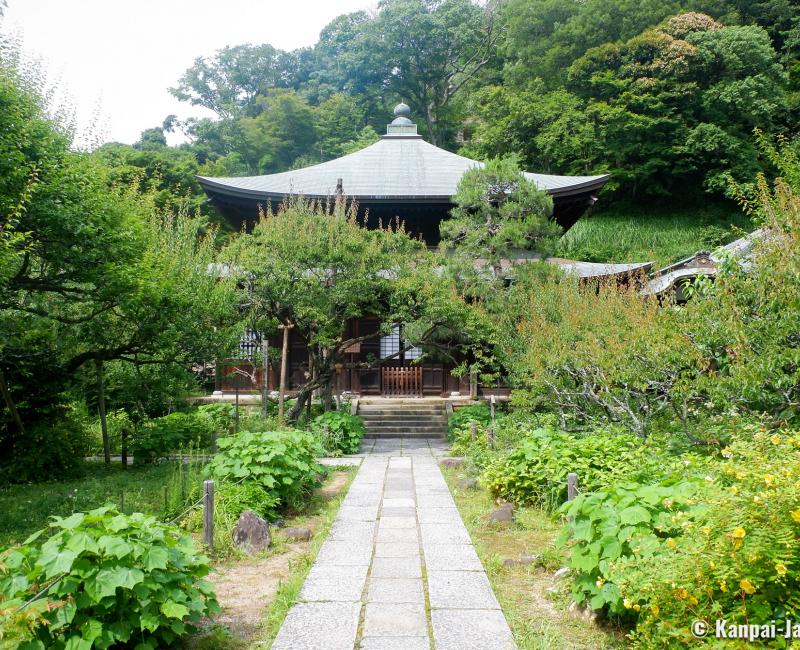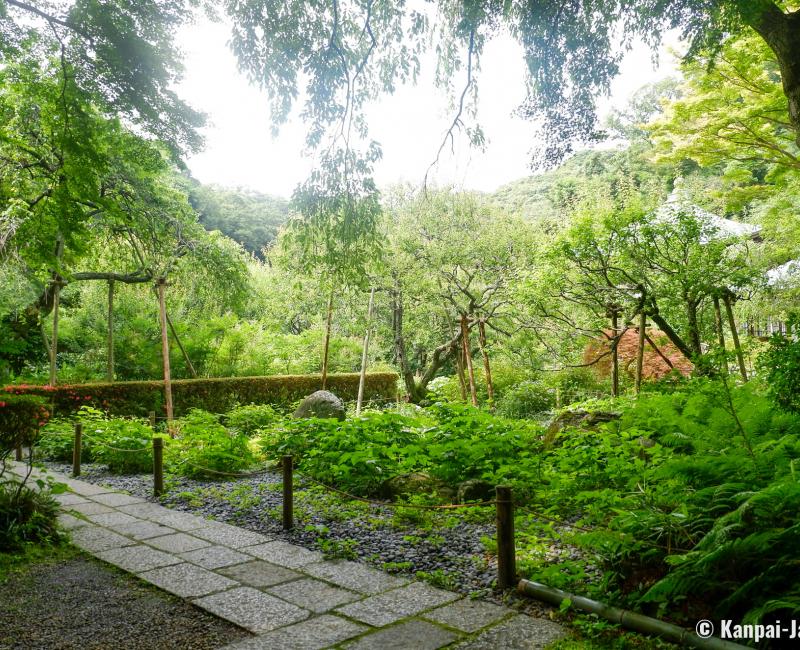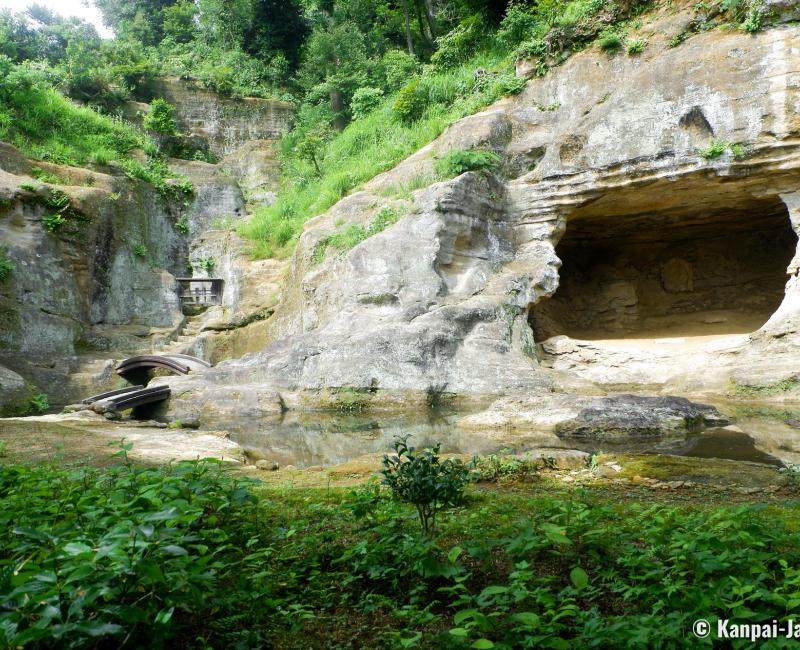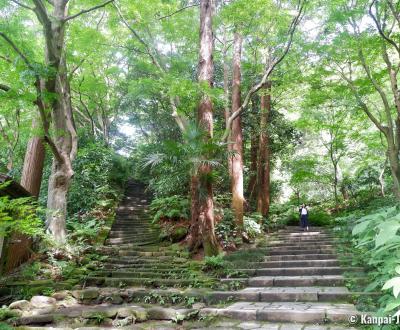Zuisen-ji
Kamakura’s Most Beautiful Zen Gardens
Zuisen-ji is a Zen Buddhist temple in the north-east of Kamakura. Also called the "flower temple," it is renowned for its gardens and its overflowing vegetation in summer. Moreover, its design allows for various flowers and plant species to bloom throughout the year. It is the last stopover of the Tenen Hiking Trail.
Zuisen-ji temple was founded in 1327, at the end of Kamakura period (1185-1333), when the city was the capital of Japan. Its founder, Muso Kokushi (1275-1351), was a Buddhist monk and writer, famous for designing many Zen gardens. Zuisen-ji temple is affiliated to the Rinzai School of Zen Buddhism, like the great Engaku-ji temple in Kamakura. The Rinzai School promotes zazen (meditating while sitting with a straight back) and teachings by koan, riddles that have unlikely answers to reach the Buddhist enlightenment.

The sober temple in the sumptuous vegetation
The place, surrounded by lush greenery in the heart of Momijigayatsu ("the red maples’ valley"), a little, remote valley, is indeed appropriate for meditation. A beautiful gate stands as the entrance of the temple’s grounds in the middle of the street, in a typical residential area of Kamakura, along with an unpretentious small wooden ticket booth. The place’s layout is simple, without big and shiny structure. The prominent element here is the overwhelming nature that was, of course, carefully channeled.
Behind the ticket booth, a stone path turns on the left and winds through shrubs of hydrangeas, pansies and maple 🍁 trees. The walk will please amateurs of lush gardens, as well as photographers who will enjoy taking beautiful pictures and play with the scenery’s natural colors, especially in summer.

Cultivate the nature to cultivate the mind
When walking straight ahead from the admission booth, the path leads to Sanmon Gate, the main entrance. Wide, ancient stairways appear between wonderful trees, reminding the atmosphere of a temple in the middle of an abandoned forest. Several steps above, a gate with a Japanese traditional tiled roof opens on the garden.
Stone pavements delineate parcels where various plants species are grown. The flowers’ blooming was thought to happen all year around:
- Plum trees in March,
- Cherry trees in late March-early April,
- Hydrangeas in May and June; and,
- The reddening of maple trees in November.
Zuisen-ji temple’s Website also displays many pictures of the temple and its vegetation throughout the year. The garden’s maintenance is very important, as for its creator, Muso Kokushi, tending the garden was the same as cultivating the mind.

A Zen rock garden designated Place of Scenic Beauty
The wooden buildings, partly hidden by the vegetation, are quite simple, but elegant. The main hall Hondo shelters a large statue of Jizo Bosatsu, the protector of children and travelers that is worshipped here. Other smaller Buddhist statues are laid out next to it.
A few steps away, right behind the temple, was built an artificial landscape comprising Tennyodo cave and Choseichi pond. They were designed by the temple’s founder and constitute a small rock garden listed as a Special Place of Scenic Beauty of Japan. Two little wooden bridges connect the small pond to a path climbing up in the hills. They symbolize the link between the different elements of nature.
The temple is impressive by the garden’s importance and the care it is given, that outshines the simple yet refined architecture. Zuisen-ji is thus a beautiful stopover if you like little-known places.
Zuisen-ji is located at the end of Tenen Hiking Trail, which starts from Kencho-ji and passes by Engaku-ji. It comes as the perfect conclusion of a walk in the heights between the small valleys of the north of Kamakura.

